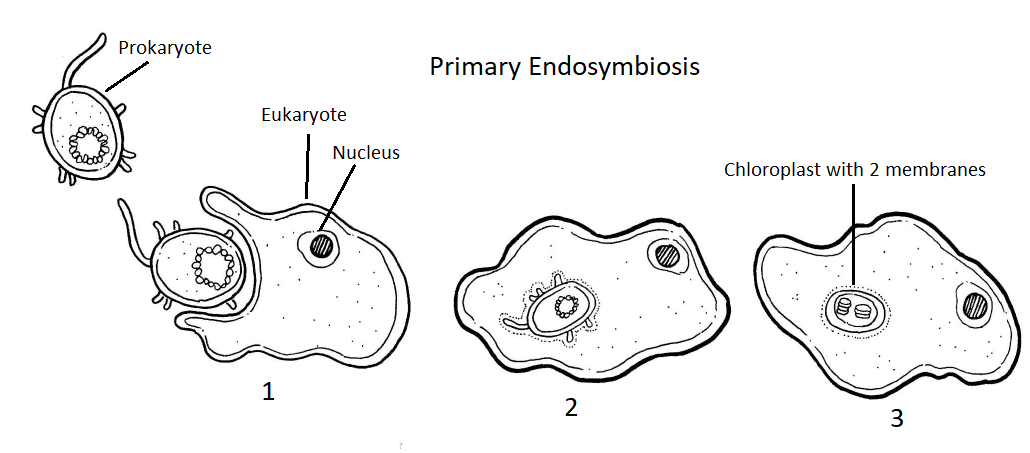2: Prokaryotes
- Page ID
- 35303
The earliest cells on Earth were prokaryotic (pro- meaning before, karyo- referring to the nucleus). As is implied by the name, prokaryotic cells lack a nucleus, as well as any membrane bound organelles. Prokaryotes have been divided into two domains: Bacteria and Archaea. Alongside domain Eukarya, these three domains compose the tree of life, as we currently understand it.
Cell Structure
In their simplest form, these unicellular organisms possess a cell wall, cell membrane, cytosol, ribosomes, and DNA. As the vast diversity of life on Earth is prokaryotic, you can imagine that there is a great diversity of forms and many exceptions to these general guidelines.
The DNA in prokaryotic cells is a single chromosome in the form of a loop, often bundled into a condensed region called a nucleoid. There may be small loops of DNA present called plasmids. These small loops of DNA can be exchanged between prokaryotes and the environment and are frequently the location of antibiotic resistance genes.
On the exterior, prokaryotes have a cell wall. They may also have flagella (sing. flagellum) for movement and/or pili (sing. pilus) for interacting with other organisms.

Reproduction
There is no nucleus in a prokaryotic cell, so they cannot undergo mitosis or meiosis. Instead, prokaryotes replicate by a process called binary fission (bi- meaning two, fission meaning to split apart).

Endosymbiosis
Endosymbiosis (endo- meaning inside, symbiosis meaning shared life) is a process by which several organelles were acquired by lineages of eukaryotic organisms, including mitochondria and plastids.
Primary Endosymbiosis
Both mitochondria and the chloroplasts in plants were acquired through a process called primary endosymbiosis. In the primary endosymbiosis that resulted in chloroplasts, a photosynthetic prokaryote similar to modern day cyanobacteria was engulfed by a heterotrophic eukaryote (a method of eating called phagocytosis). Something went wrong during this process and the prokaryotic cell was not digested. Instead, it was trapped within the eukaryotic cell. It continued to photosynthesize, producing sugars that resulted in increased fitness for its host. Over a long period of time, genes were eventually transferred between the prokaryote and the eukaryotic nucleus and an organelle was formed: the chloroplast.

Secondary Endosymbiosis
Many unrelated groups of photosynthetic organisms obtained the ability to photosynthesize by a process called secondary endosymbiosis. This is similar to primary endosymbiosis, except the organism that gets engulfed is a photosynthetic eukaryote (whose chloroplasts were the result of primary endosymbiosis somewhere in their evolutionary history). For example, brown algae and diatoms are both the result of a secondary endosymbiotic event in which a heterotrophic heterokont (see Chapter 5.2 Water Molds) engulfed a red alga.

- 2.1: Cyanobacteria
- Cyanobacteria are a group within Domain Bacteria that perform oxygenic photosynthesis are related to the chloroplasts in plants. They are often found in mutualistic relationships fixing nitrogen.
- 2.2: Root Nodules
- Root nodules are a form of mutualism between bacteria and plant roots


